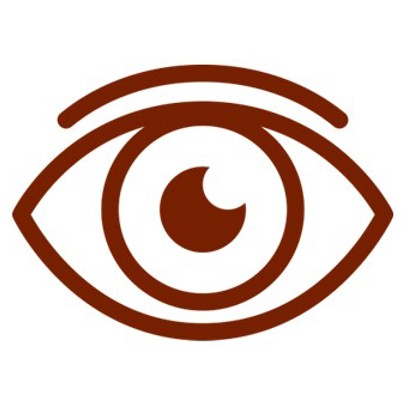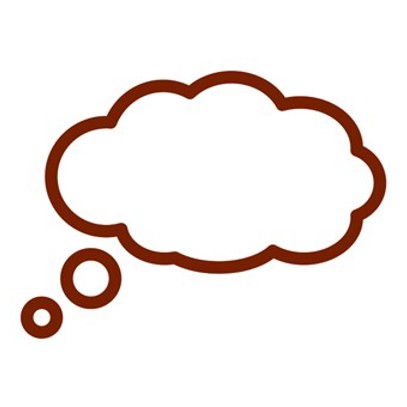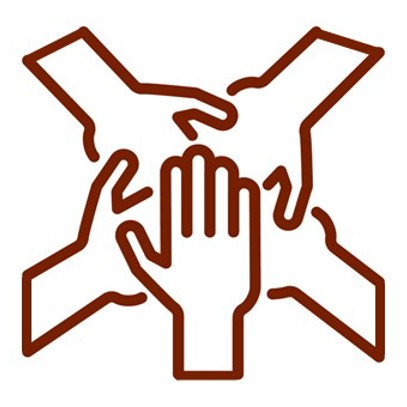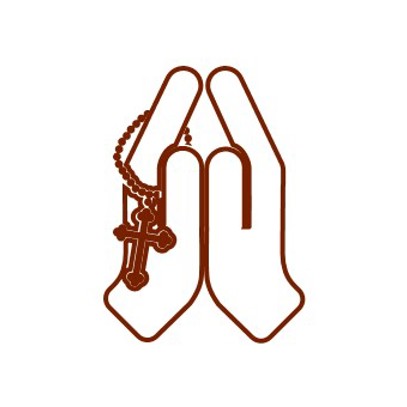Human Dignity
Secondary
How is dignity upheld?

Laxmi using a water tap that she advocated to have installed as a member of the Child Club at her old school in Jajarkot district, western Nepal. Photo: Richard Wainwright/Caritas Australia
By the end of this unit, students will:
- Develop a deep understanding of human dignity as a principle of Catholic Social Teaching
- Familiarise themselves with the ways in which Caritas Australia works to uphold human dignity through its work both in Australia and around the world
- Apply their understanding of human dignity by creating an action plan of how they will work towards upholding the dignity of others in their local communities.
This learning sequence has been created using the ‘See, Judge and Act’ model. This reflection–action process was first used by a Belgian Catholic priest, Joseph Cardijn (who later became a Cardinal) with Young Christian workers prior to the first World War. This approach was also recommended in the 1961 encyclical letter written by Pope John XXIII called Mater et Magistra (Mother and Teacher).
Before you start:
- Watch the Human Dignity film and familiarise yourself with the pause points
- Provide your students with a copy of the Success Criteria. This will help students self-assess their knowledge and understanding of human dignity throughout the unit
- Additional useful readings for teachers include Pope Francis’ encyclical Fratelli Tutti and commentaries on The Good Samaritan scripture reading.

SEE
What is human dignity?
All Years
Class Brainstorm: What do you think human dignity is? Ask students to brainstorm answers in order to gauge their level of understanding.
Define human dignity: Students either individually or collectively write a definition for human dignity. Revisit this definition over the duration of this unit to see if students want to edit it.
Watch the Human Dignity film and stop at the pause points. Discuss the questions as a class or ask students to write them down as a reflection task.
All Years
Where Do I Stand? activity: Two signs (strongly agree and strongly disagree) are placed on either side of the classroom. The teacher reads out statements relating to human dignity and students position themselves along the continuum based on their own beliefs.
The Universal Declaration of Human Rights and the Sustainable Development Goals
All Years
Think-Pair-Share: What do you know about the Universal Declaration of Human Rights?
Years 7-8
Watch the following Ted-Ed video on Human Rights.
Why do you think it is important to have human rights? What is the relationship between human rights and human dignity? (This can be a challenging concept, so it might be a good idea to do it as a class discussion.)
Years 9-10
Read over the 30 articles in the Universal Declaration of Human Rights and answer the below question:
How does the document work to uphold and respect the dignity of individuals around the world? Select two or three articles and explain how they directly link to human dignity.
All Years
In 2015, the Sustainable Development Goals (SDGs) were released by the United Nations. These are 17 goals for everyone, everywhere. All 17 goals are interconnected, and they aim to overall achieve 3 extraordinary things by 2030: end extreme poverty; fight inequality and injustice; and fix climate change.
Class Brainstorm: How do extreme poverty, inequality and injustice, and climate change impact upon human dignity?
Explore the Sustainable Development Goals website. Find 3 statistics that demonstrate the challenges many communities around the world face and 3 statistics that demonstrate positive progress in working towards achieving the goals. Share your findings in small groups.
Select one of the 17 Sustainable Development Goals and explain how the goal links to protecting and upholding human dignity.

JUDGE
What would I do?
All Years
Lifeboat Activity: This activity challenges student thinking about the roles people play in society and the value they are given. Its aim is to deepen their understanding that every person, no matter what age, ability, gender, socioeconomic status or walk of life, has inherent and God-given human dignity. You will require the Lifeboat Activity to complete this task.
Teachers: Please consider this activity carefully first to ensure it is suitable for your students. If you think some students might find it too difficult to choose, please adapt the activity and affirm that each person deserves a place as we are all created equal, unique and are made in the image and likeness of God.
Why do we value human dignity? Human dignity in scripture and the views of Church leaders
Students reflect on human dignity from a Catholic perspective, increasing their understanding of the foundation of the Catholic Social Teachings as present in scripture, the Catechism of the Catholic Church and the views of Catholic Church leaders.
Years 7-8
Students complete the Why Do We Value Human Dignity? activity.
Encyclicals: Pope Francis’ encyclical Fratelli Tutti focuses strongly on the concept of human dignity, particularly in reference to specific groups in society that have experienced discrimination and/or marginalisation.
Introduce students to encyclicals using our Fratelli Tutti Resource.
Years 9-10
Class Brainstorm: Can you recall any Bible passages/stories that teach us about the importance of human dignity?
Activity: Students complete the below activities
Watch: Watch the following clip with your students as an introduction to the next activity. Pope Francis: Peace depends upon human dignity
Research: Ask students to create a table with two columns in their workbooks or on an online document.
The heading of one of the columns should read ‘Catholic Church Leaders’ and the other should read ‘The Catechism of the Catholic Church’.
Students are to undertake their own research, locating quotes, articles or videos where Church leaders express their views on the importance of upholding human dignity for different members of society. They are to insert these in the first column. You may wish to have a discussion prior, explaining who these Church leaders may be.
Students then need to locate quotes from the Catechism of the Catholic Church on human dignity, and place these in the second column.
Helpful tip: You may wish to refer them to the YOUCAT (The Youth Catechism) if they, or the school, has copies.
Debrief: Using work completed and information collected from the above tasks, ask students to answer the following question in 3 sentences: What is human dignity and why is it important?
Ask them to share their responses, and as a class, discuss the similarities noticed amongst their classmates.
Encyclicals: Pope Francis’ encyclical Fratelli Tutti focuses strongly on the concept of human dignity, particularly in reference to specific groups in society that have experienced discrimination and/or marginalisation.
Introduce students to encyclicals using our Fratelli Tutti Resource.
Complete the Fratelli Tutti Jigsaw Activity.
Seeing the Dignity in Ourselves
In respecting the dignity of others, it is important that we recognise our own inherent and God-given dignity.
All Years
Provide each student with the Dignity in Ourselves worksheet. Have students spread out and sit on their own as they complete the activity. The aim of the task is to assist students in recognising their own traits, gifts and talents, and reflect on why they deserve to be valued and respected. If you are inside a classroom, you may wish to play some soft reflective music. Alternatively, you can take them outside if the weather permits.
Global Social Justice Issues
Years 7-8
Using the Poverty and Human Dignity worksheet, students research the issue of poverty, and make connections to human dignity.
Years 9-10
Using the Human Dignity- Guided Research Worksheet, students select one of the below issues and undertake research on how the issue impacts the human dignity of individuals and their communities.
Issues:
- Refugees and forced migration
- Gender inequality
- Human trafficking and slavery
- Poverty
- Global pandemics (COVID-19 – accessibility to vaccines, healthcare and sanitation)
Human Rights and Aboriginal and Torres Strait Islander Peoples
All Years
Students read the information sheet by the Australian Human Rights Commission: Human rights and Aboriginal and Torres Strait Islander peoples.
Create an online presentation or engaging video that covers the following:
- What are some of the key human rights issues being faced by Aboriginal and Torres Strait Islander peoples?
- What are the limitations around protecting these human rights?
- Identify and explain THREE ways to improve human rights protection for Aboriginal and Torres Strait Islander peoples.

ACT
The Work of Caritas
Re-Watch the Human Dignity film this time asking students to think about why and how Caritas Australia works to uphold human dignity.
Display this statement:
“Caritas Australia responds to the immediate and long-term development needs of communities, particularly the most vulnerable, regardless of ethnicity, political beliefs, gender or religion. We work in a wide range of contexts, both religious and non-religious, across Australia, Asia, Africa, the Pacific and the Middle East.”
Reflect: Why do you think Caritas Australia helps the most vulnerable, regardless of ethnicity, political beliefs, gender or religion? How does this relate to human dignity?
Human Dignity Global Tour: Students take a virtual tour around the world and explore the ways in which Caritas Australia works to uphold human dignity.
Provide students with the following Google Earth Activity link and for each of the locations, ask students to write down the following:
- Name of country
- Name of feature person
- What challenges are present in the community/the life of the individual
- How Caritas Australia is upholding the human dignity of the individual/the community.
Upholding Dignity in our Local Communities
All Years
Using the Reflection and Action Planner , students reflect on the issues impacting the human dignity of others around them, and think of ways to address them.
Years 9-10
In groups, students brainstorm ways in which they can work to respect and uphold human dignity in their own school community, and pitch to the rest of the class how they could put this plan to action. This could be completed as a competition with the teacher or the remainder of the class, voting for the most practical and well thought out idea.

PRAY
All Years
At the conclusion of the lesson sequence, gather the students together for some prayer and quiet reflection. You may wish to create a sacred space at the front or in the centre of the room which includes items such as a Bible, a candle and something that represents the class or school. Ask the students to think of other items that represent human dignity to place on the sacred space. Playing some quiet music might also help centre student thinking.
As they sit in silence, provide students with a piece of paper. Ask them to write a short prayer of intercession based on a global social justice issue that impacts upon upholding and respecting the human dignity of others.
For Example: We pray for those who are forced to flee their homes due to violence and conflict. May we see in them the inherent human dignity that we all possess, and offer them a safe refuge in this vast land of ours.
Select 5 or 6 students to stand up and read out their prayer of intercession then place then down on the sacred space. One by one, ask the remaining students to quietly put their prayers down on the sacred space.
Once this is done, select one student to read out this concluding prayer:
Creator God, Your image is alive in every human person
giving to each of us an inviolable dignity.
Create in us a desire to act in solidarity, the ability to work together, and a willingness to share with others our time, our energy, our skills and talents, and our wealth.
As we share and enjoy the fruits of your creation, restore in us your vision of a world made whole, and inspire us to commit ourselves to the common good.
Gracious God, give us ears to hear, eyes to see and hearts to love, so that we reflect you in our way of life, and in our choices, words and actions.
Jesus is the good news to the poor. As his followers, may we recognise the call to be the same.
Amen.
(Australian Catholic Social Justice Council)
Related downloads:
- Success Criteria
- Where Do I Stand?
- Lifeboat Activity
- Why Do We Value Human Dignity?
- Human Dignity in Scripture
- Senses of Scripture – Human Dignity
- Fratelli Tutti Jigsaw Activity
- Dignity in Ourselves Worksheet
- Poverty and Human Dignity Worksheet
- Human Dignity – Guided Research Worksheet
- Reflection and Action Planner












